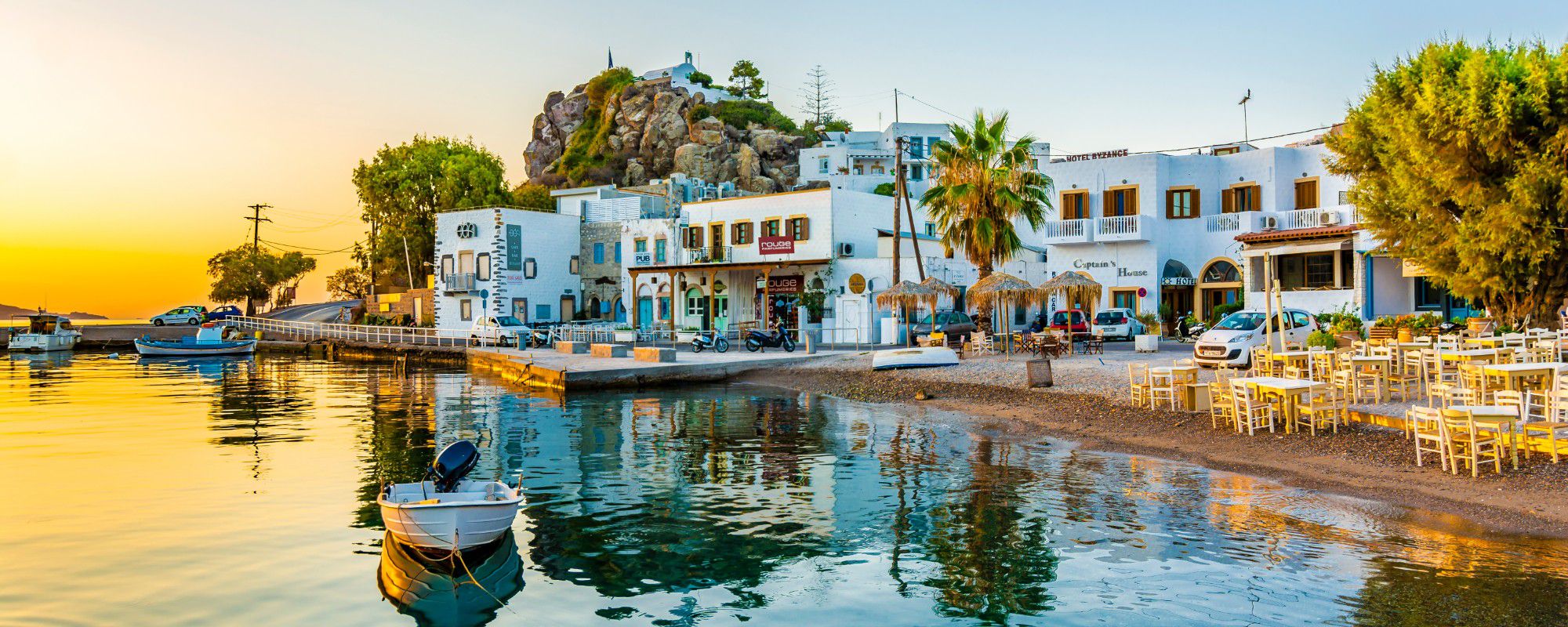Imagine yourself wandering the enchanting streets of Patmos, a picturesque Greek island in the Aegean Sea. As you stroll through the narrow cobblestone paths, soaking in the island’s rich history and vibrant culture, you come across a sight that instantly captures your attention – the magnificent Byzantine chapels. These architectural gems transport you back in time, offering a glimpse into the island’s religious heritage and artistic brilliance. From the intricate frescoes adorning the walls to the serene atmosphere that envelops each chapel, there is a sense of awe and reverence that can only be experienced firsthand. Join us on a journey of discovery as we delve into the beauty and significance of the Byzantine chapels of Patmos, and uncover the timeless treasures they hold.
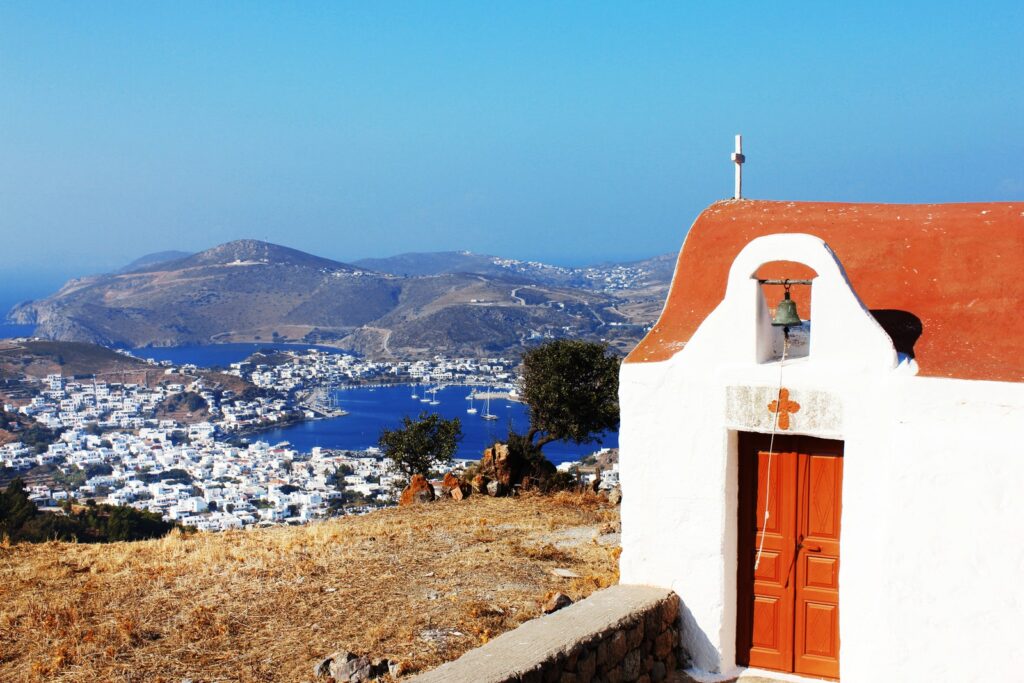
History of Byzantine Chapels in Patmos
Patmos, a small Greek island located in the Aegean Sea, holds great significance in Byzantine history. The island became a major center of Christianity during the Byzantine Empire, attracting pilgrims from all over the world. The development of Byzantine chapels and monasteries on Patmos played a crucial role in the spread and preservation of Byzantine art and culture.
Importance of Patmos in Byzantine history
Patmos, known as the “Jerusalem of the Aegean,” holds immense importance in Byzantine history. It was on this island that the Apostle John is said to have received the divine revelation known as the Book of Revelation. This sacred text holds a significant place not only in Christian theology but also in the development of the Byzantine Empire. Consequently, Patmos became a place of great religious significance and attracted numerous pilgrims and scholars.
Development of Byzantine chapels and monasteries in Patmos
The development of Byzantine chapels and monasteries on Patmos can be traced back to the 11th century. The Emperor Alexios I Komnenos granted the island to the Byzantine Monastery of Saint John the Theologian, which became the center of religious and cultural life on Patmos. Under the patronage of the monastery, numerous chapels were constructed across the island, each dedicated to different saints and significant events from the Byzantine era.
Architectural styles of Byzantine chapels in Patmos
The Byzantine chapels in Patmos display a unique blend of architectural styles, reflecting the influence of various historical periods. The chapels showcase elements of Byzantine, Romanesque, and Gothic architecture, creating a fascinating visual tapestry. While some chapels have simple and modest designs, others feature elaborate domes, intricate frescoes, and meticulously crafted mosaics. These architectural styles exemplify the rich artistic heritage of the Byzantine Empire.
The Cave of the Apocalypse
The Cave of the Apocalypse is one of the most important religious sites on Patmos. According to tradition, it was in this cave that the Apostle John received his vision from God, which ultimately led to the writing of the Book of Revelation. The significance of the cave as a sacred space draws pilgrims and tourists alike to witness the place where a pivotal moment in Christian history occurred.
Significance of the Cave of the Apocalypse
The Cave of the Apocalypse holds immense significance in Christian theology. It is believed to be the exact spot where the divine revelation took place, making it a site of great spiritual energy and connection. Pilgrims visit the cave to experience a deep sense of awe and to connect with the divine. The cave represents a tangible link between the past and the present, offering a profound and transformative experience for those who enter its hallowed halls.
Description of the cave
The Cave of the Apocalypse is a natural limestone grotto with a small entrance leading to a larger chamber inside. The interior of the cave is dimly lit, creating an atmosphere of mystery and reverence. The walls of the cave are adorned with icons, religious artifacts, and inscriptions left by pilgrims throughout the centuries. The cave also contains a small fissure in the rock, known as the “Fissure of the Apocalypse,” which is said to amplify the spiritual energy of the space.
Religious significance and pilgrimage
The Cave of the Apocalypse has been a place of pilgrimage for centuries, drawing people from all corners of the world. Pilgrims come to Patmos to pay their respects to the sacred site and to seek spiritual enlightenment. Many engage in prayers, contemplation, and rituals within the cave, seeking guidance and divine intervention. The Cave of the Apocalypse stands as a testament to the enduring power of faith and the profound impact that one man’s vision can have on the course of history.
Chapel of Saint Anne
The Chapel of Saint Anne is a historic religious site located on the island of Patmos. It holds significance not only for its religious importance but also for its architectural features and decorative elements. The chapel provides visitors with a glimpse into the rich Byzantine heritage of the island.
History and significance of the Chapel of Saint Anne
The Chapel of Saint Anne was built in the 12th century, during the Byzantine period. It was dedicated to Saint Anne, the mother of the Virgin Mary, and became a place of worship and pilgrimage for devout Christians. Over the centuries, the chapel has served as a sanctuary and a symbol of faith for the local community and visitors alike.
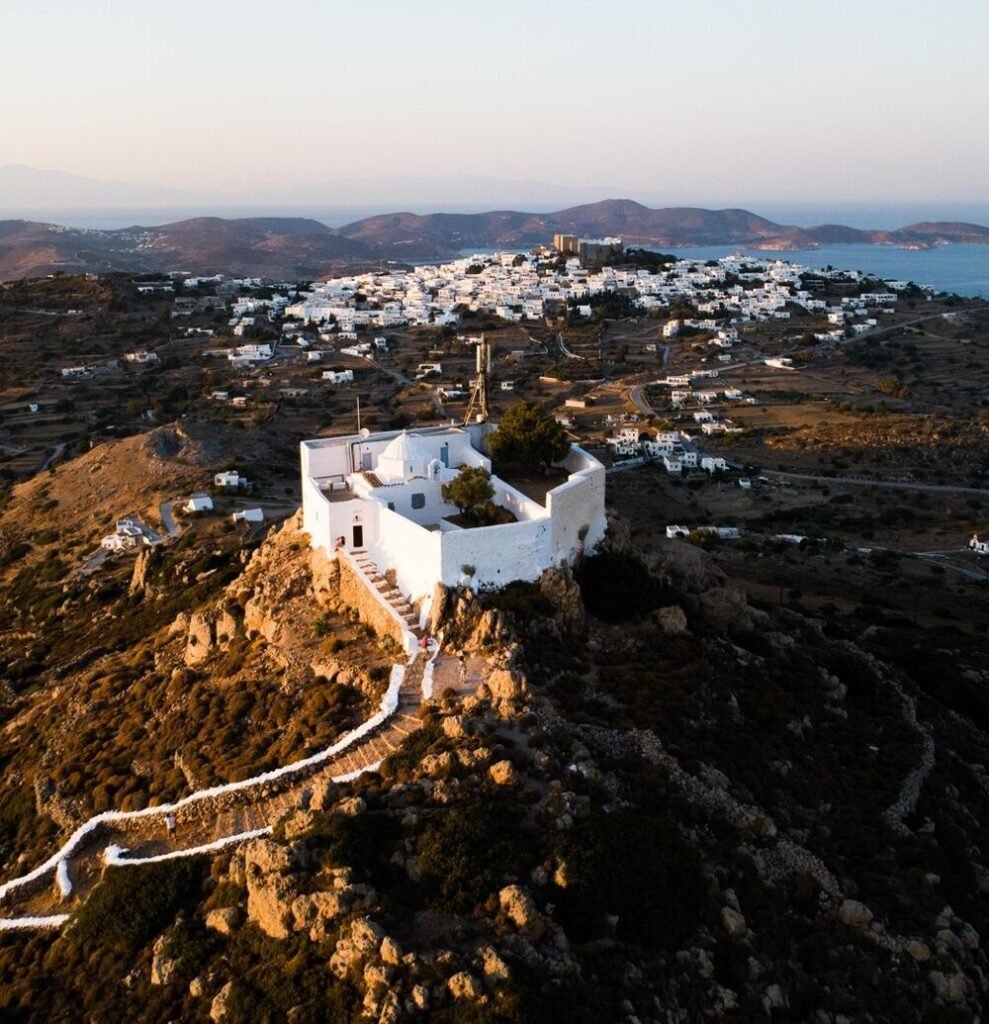
Architectural features and decoration
The Chapel of Saint Anne showcases the architectural style prevalent during the Byzantine era. The exterior of the chapel is characterized by its simple and unadorned stone walls, reflecting a sense of austerity and humility. However, the interior of the chapel tells a different story. Intricate frescoes cover the walls, depicting scenes from biblical narratives and the lives of saints. The vibrant colors and detailed artwork create a visually stunning experience for visitors.
Chapel of Saint John the Theologian
The Chapel of Saint John the Theologian holds a central place in the religious and cultural landscape of Patmos. It is closely associated with the life and teachings of Saint John the Theologian, the author of the Book of Revelation. The chapel’s significance extends beyond its historical and religious importance, as its unique iconography and frescoes offer a glimpse into the artistic legacy of the Byzantine Empire.
Importance of the Chapel of Saint John the Theologian
The Chapel of Saint John the Theologian is considered one of the holiest sites on Patmos. It is believed to have been built on the spot where Saint John received his divine revelation, making it a place of immense spiritual power. Pilgrims from around the world visit the chapel to pay homage to Saint John, seeking his intercession and spiritual guidance.
Iconography and frescoes
The interior of the Chapel of Saint John the Theologian is adorned with a stunning collection of Byzantine frescoes and icons. The frescoes depict scenes from the life of Saint John, as well as other biblical narratives and religious figures. The intricate brushwork and vivid colors exemplify the mastery of Byzantine artistry. These artistic representations provide a tangible connection to the spiritual realm and serve as a source of inspiration and contemplation for visitors.
Pilgrimage and religious rituals
The Chapel of Saint John the Theologian is a site of pilgrimage and religious rituals. Pilgrims come to the chapel to seek blessings, to offer prayers, and to partake in religious ceremonies. The chapel holds special significance during the feast day of Saint John the Theologian, which is celebrated on May 8th each year. On this day, a grand procession takes place, carrying the holy relics of Saint John and invoking his spiritual protection.
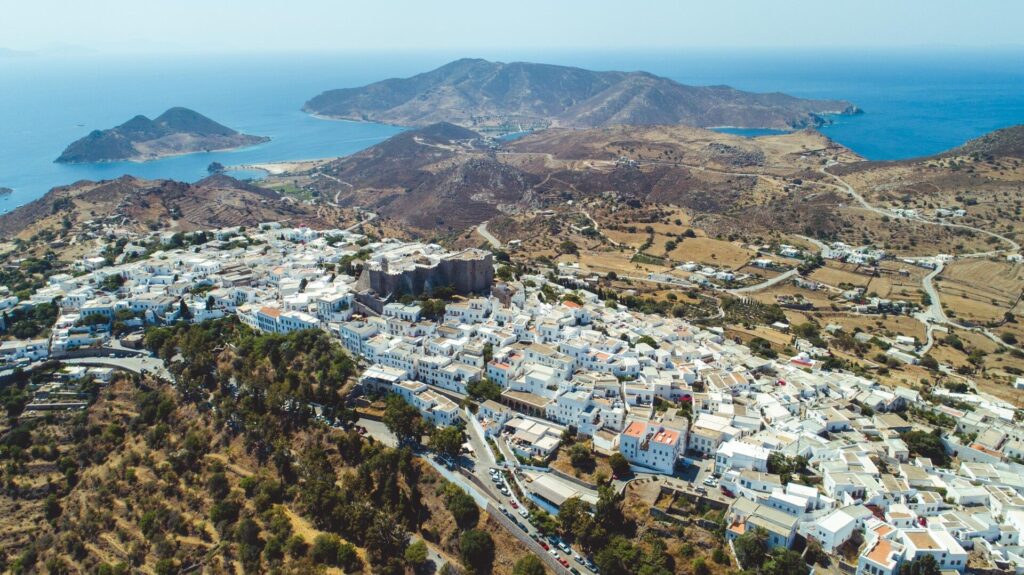
Chapel of the Holy Cross
The Chapel of the Holy Cross stands as a testament to the multifaceted history and religious significance of Patmos. It serves as a place of worship, a gathering spot for the local community, and a showcase of unique architectural design.
History and significance of the Chapel of the Holy Cross
The Chapel of the Holy Cross has a rich history dating back to the Byzantine period. It was constructed as part of the Byzantine Monastery of Saint John the Theologian and occupies a central place within the monastery complex. The chapel holds immense importance for both monks and pilgrims, representing a place of spiritual solace and devotion.
Unique architectural design
What sets the Chapel of the Holy Cross apart is its architectural design. The chapel is built directly into the rocky landscape, utilizing the natural caves and crevices of the terrain. This unique approach to construction creates an intimate and harmonious connection between the man-made structure and the surrounding environment. The combination of the natural elements with the Byzantine architectural style results in a truly awe-inspiring sight.
Religious ceremonies and events
The Chapel of the Holy Cross is a hub of religious ceremonies and events throughout the year. It serves as a venue for daily prayers, services, and religious processions, providing a space for deep contemplation and communion with the divine. The chapel’s interior is adorned with religious icons and artifacts, further enhancing the spiritual atmosphere. The holy relics of various saints are also displayed, drawing visitors seeking spiritual solace and blessings.
Chapel of Saint Nicholas
The Chapel of Saint Nicholas holds a special place in the hearts of the locals on Patmos. It is an embodiment of their faith, traditions, and cultural heritage. The chapel’s history is intertwined with legends and tales, adding to its mystique and charm.
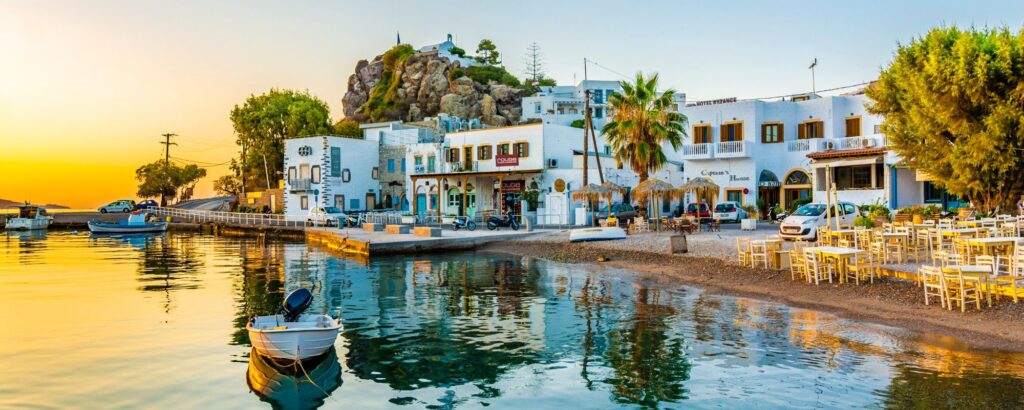
History and legends surrounding the Chapel of Saint Nicholas
According to local legends, the Chapel of Saint Nicholas was founded by fishermen who miraculously survived a violent storm at sea. In gratitude for their survival, they built the chapel dedicated to Saint Nicholas, the patron saint of seafarers. The chapel became a focal point for the fishing community, offering solace and protection during their maritime ventures.
Iconography and artwork
The interior of the Chapel of Saint Nicholas is adorned with a collection of religious icons and artwork. These intricately painted icons depict scenes from the life of Saint Nicholas and other saints revered by the local community. The craftsmanship and attention to detail of these icons are a testament to the devotion and artistic talent of the Byzantine era.
Local traditions and customs
The Chapel of Saint Nicholas plays an integral role in local traditions and customs on Patmos. It is a gathering place for the community, serving as a venue for celebrations, weddings, and baptisms. The chapel’s annual feast day on December 6th is a highlight of the local calendar, attracting residents and visitors alike. The feast day is marked by religious processions, music, dancing, and a festive atmosphere, honoring the legacy of Saint Nicholas and celebrating the unity of the community.
Chapel of the Virgin Mary
The Chapel of the Virgin Mary is a place of profound devotion and veneration on Patmos. Nestled amidst the picturesque landscape, the chapel’s architectural beauty and spiritual significance attract both locals and tourists seeking solace and reflection.
Significance of the Chapel of the Virgin Mary
The Chapel of the Virgin Mary holds immense religious and historical significance. It is believed to have been constructed by Emperor Alexios I Komnenos, who granted the island of Patmos to the Byzantine Monastery of Saint John the Theologian. The chapel serves as a symbol of the deep connection between the island and its spiritual heritage.
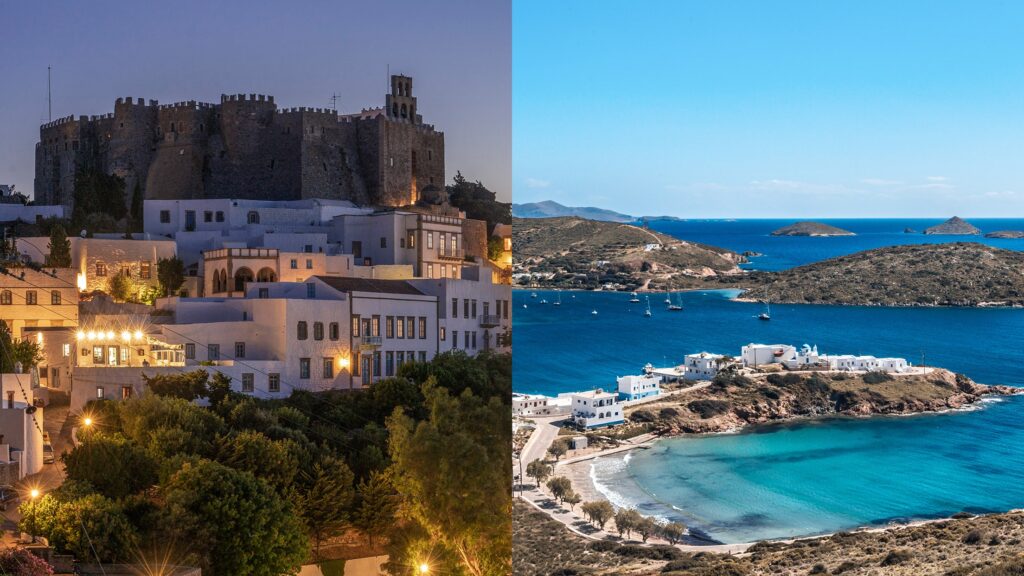
Architectural features and layout
The Chapel of the Virgin Mary showcases the architectural style prevalent during the Byzantine period. The exterior of the chapel is characterized by its simple yet elegant design, featuring stone walls and a dome. Inside, visitors are greeted by a tranquil and reverent atmosphere. The walls are adorned with frescoes depicting scenes from the life of the Virgin Mary, creating a sense of intimacy with the divine.
Religious festivals and celebrations
The Chapel of the Virgin Mary is a place of vibrant religious festivals and celebrations. The annual feast day dedicated to the Virgin Mary, celebrated on August 15th, is an occasion of great joy and spiritual significance. The chapel becomes a center of devout worship, with processions, prayers, and the lighting of votive candles. The festival brings together the local community and visitors, fostering a sense of unity and devotion among all who participate.
Chapel of Saint George
The Chapel of Saint George is a testament to the enduring power of faith and the rich cultural heritage of Patmos. Dedicated to Saint George, the patron saint of warriors and knights, the chapel holds a special place in the hearts of the local community.
History and symbolism of the Chapel of Saint George
The Chapel of Saint George is steeped in history and symbolism. It is believed to have been built during the Byzantine era, serving as a place of worship and protection for the island’s inhabitants. The chapel’s dedication to Saint George is significant, as he is revered as a symbol of courage, strength, and spiritual fortitude. The iconography and design of the chapel pay homage to these qualities, creating a space that inspires and uplifts.
Artistic representation and icons
The interior of the Chapel of Saint George is adorned with exquisite icons and artwork, showcasing the unique artistic style of the Byzantine era. The icon of Saint George slaying the dragon is a central piece, symbolizing victory over evil and the triumph of righteousness. The vibrancy of the colors, the attention to detail, and the skillful brushwork create a visual feast for the eyes and a deep spiritual connection for the soul.
Role in local culture and folklore
The Chapel of Saint George plays a significant role in the local culture and folklore of Patmos. Its feast day on April 23rd is celebrated with great enthusiasm, drawing residents and visitors to participate in the festivities. The day is marked by processions through the streets, accompanied by traditional music and dance. The chapel serves as a gathering point for the community, fostering a sense of belonging and unity through shared faith and cultural heritage.
Chapel of the Holy Trinity
The Chapel of the Holy Trinity is a place of profound religious significance on Patmos. Nestled amidst the picturesque landscape, the chapel beckons visitors to experience the serenity and beauty of its spiritual ambiance.
Religious significance of the Chapel of the Holy Trinity
The Chapel of the Holy Trinity holds immense religious significance as a place of worship and contemplation. It serves as a sanctuary for individuals seeking solace, guidance, and spiritual renewal. The chapel is dedicated to the Holy Trinity, emphasizing the core belief of the Christian faith and inviting visitors to explore the profound mysteries of the divine.
Architectural details and design
The Chapel of the Holy Trinity showcases the architectural style prevalent during the Byzantine period. Its exterior is characterized by its traditional stone construction, blending seamlessly with the natural surroundings. Inside, the chapel exudes a sense of tranquility, with soft lighting and ornate decoration. The walls are adorned with mosaics and frescoes depicting scenes from the life of Christ and the Holy Trinity, creating a space that invites contemplation and reverence.
Religious processions and rituals
The Chapel of the Holy Trinity is a place of religious processions and rituals. Pilgrims and locals participate in processions during significant religious occasions and feast days, carrying icons and chanting hymns. These processions serve as a demonstration of faith and devotion, as well as an opportunity for the community to come together in prayer and contemplation. The rituals performed inside the chapel, such as lighting candles and offering prayers, provide individuals with a tangible connection to the divine and a sense of peace and serenity.
Chapel of Saint Demetrios
The Chapel of Saint Demetrios stands as a testament to the enduring devotion and reverence of the people of Patmos. Dedicated to Saint Demetrios, the patron saint of soldiers and warriors, the chapel holds a significant place in the spiritual and cultural landscape of the island.
Significance of the Chapel of Saint Demetrios
The Chapel of Saint Demetrios is a place of deep significance for the local community. Saint Demetrios is revered as a protector and a source of strength, instilling a sense of courage and resilience among the people of Patmos. The chapel serves as a spiritual haven, offering solace and inspiration to those who seek comfort during challenging times.
Religious art and artifacts
The Chapel of Saint Demetrios is adorned with a collection of religious art and artifacts, showcasing the rich artistic heritage of the Byzantine era. Icons depicting scenes from the life of Saint Demetrios and other significant figures of the Christian faith convey a sense of devotion and veneration. These artistic representations serve as a visual reminder of the enduring power of faith and the transformative influence of Saint Demetrios in the lives of believers.
Devotion and prayers
The Chapel of Saint Demetrios is a place of devotion and prayers. Pilgrims and visitors come to the chapel to offer their supplications and seek the intercession of Saint Demetrios. The atmosphere is imbued with a deep sense of reverence and faith, as individuals pour out their hearts in prayer and contemplation. The chapel provides a sacred space for individuals to connect with the divine, offering solace, hope, and inspiration.
